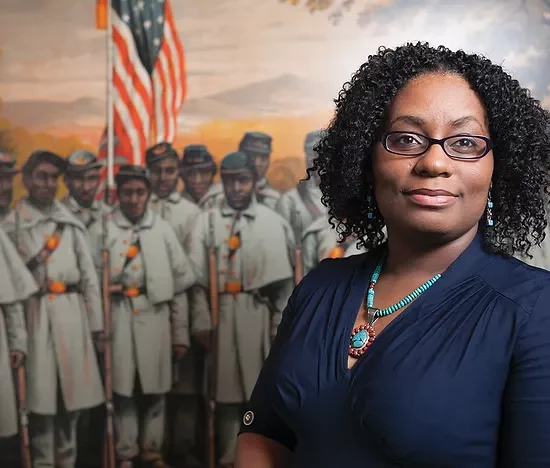Photo by Archive Photos/Stringer/Getty Images
For many, the fight for equal education in the United States started in the 1950s with the Supreme Court’s decision in Brown v. Board of Education. While the families in that case were certainly courageous, efforts to redress unequal education for African Americans had started much earlier.
Enslaved persons in the 19th century struggled to educate themselves despite legal barriers and threats to their lives and wellbeing. These efforts represented a form of protest and an intentional push toward freedom.
On December 11, 1829, police in Savannah, Ga. seized 60 copies of Black abolitionist David Walker’s Appeal to the Colored Citizens of the World, published three months earlier. A scathing critique of racist white institutions, the essay collection became so popular that some Southern states criminalized its mere possession. In Georgia, persons caught smuggling the literature into its ports or across its borders could be executed, and undercover police officers were deployed to ferret it out.
Perhaps Walker’s Appeal was inflammatory for promoting education as the means to overturn oppression in America. An enslaved person’s ability to read and write contradicted the idea that African Americans were intellectually inferior and revealed to them ideas of human equality that might induce slave rebellion. Walker wrote that slavery was destined to end, whether peacefully or violently.
Within a year of the Appeal’s publication, North Carolina exemplified the link between literacy and freedom by prohibiting free and enslaved Black persons from learning to read and write. Georgia passed a similar law in 1833, and other Southern states followed suit.
Despite the roadblocks to education for African Americans, the desire to learn didn’t diminish, and some found ways to circumvent the law.

Photo by Archive Photos/Stringer/Getty Images
Susie Baker was one of those people. She was born enslaved in 1848 in Georgia’s sea islands, the eldest of nine children. She was raised by her grandmother in Savannah, Georgia. Every day, young Susie and her brother were sent to a Mrs. Woodhouse, a widow and friend of her grandmother, who lived on Bay Lane in Savannah, Georgia.
The school in Mrs. Woodhouse’s home became the first of two secret schools Susie would attend in her community. “We went every day about nine o’clock, with our books wrapped in paper to prevent the police or white persons from seeing them,” she recounted in her memoir.
If any of the individuals were ever caught, they might have received a fine or, worse, a whipping, which was mandated by a Georgia law passed before Susie was born.
Her literacy would prove invaluable not only to her but to other African Americans she educated during and after the Civil War.
During the battle at Fort Pulaski at the mouth of Savannah’s harbor (April 1862), Susie escaped with her uncle and his family, and they made their way to Union military lines. Susie quickly found herself teaching both children and adults to read and write while she herself was only 14 years old.
For a time, Susie served as a laundress with the 33rd U.S. Colored Troops while finding the time to teach soldiers. This photo of Susie King Taylor was taken some time between 1890 and 1902 and was printed in her memoir, “Reminiscences of My Life in Camp with the 33rd United States Colored Troops Late 1st S.C, Volunteers.”

Susie’s commitment and passion for teaching continued after the war, and she opened schools for both children and adults in Savannah.
After the war, some states established public school systems that, at first, accorded only miserly space to African American students. The Freedmen’s Bureau, established in 1865, provided some educational resources. Freedmen’s schools like the one pictured here were built all over the South before the Civil War ended. This photograph, likely taken between 1865 and 1870, shows mostly female students with their teachers at a Freedman’s School in Beaufort, S.C.
The Bureau did not build enough schools to meet demand. Even in the poorest rural communities, African American men and women hosted fundraisers and donated land to build schools. Susie’s schools thus offered much needed learning opportunities.
In the later years of the Reconstruction Era (1865-1877), a dual system of public schools started to form in many municipalities. A single education board offered separate public education to African Americans and white people in different school systems. These new public schools made it hard for Susie to sustain enrollment at her private schools, forcing her to close all of them by the 1870s.
Although fraught with challenges and faced with closure, Susie’s schools and her story show the struggles and lengths Black citizens traversed for equal education. Her journey left a lasting legacy on generations of activism, leading much later to the 1954 U.S. Supreme Court determination that separate education is not equal.

Learn more:
James D. Anderson, The Education of Blacks in the South, 1860-1935 (University of North Carolina Press, 1988)
Susie King Taylor, Reminiscences of My Life: A Black Woman’s Civil War Memoirs (Wiener, Markus Publishers, Incorporated, 1989)
Life Story: Susie Baker King Taylor (1848-1912): https://wams.nyhistory.org/a-nation-divided/reconstruction/susie-baker-king-taylor/
David Walker, David Walker’s Appeal to the Colored Citizens of the World (Martino Fine Books, 2015)





